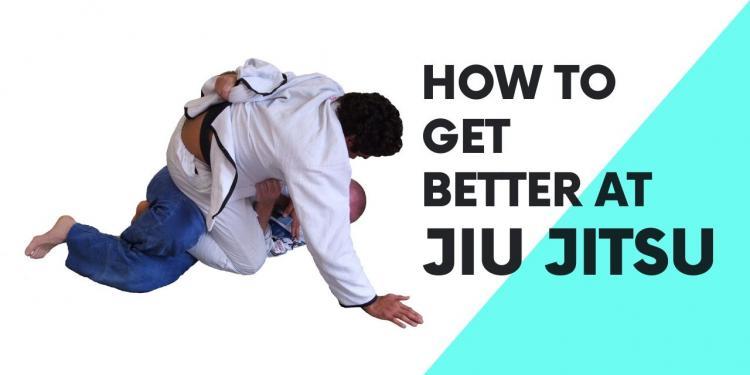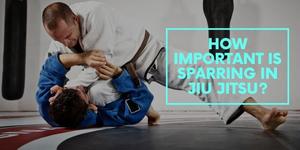Jiu Jitsu is an effective martial art for developing its practitioner’s submission grappling skills. Not only is this skill critical for aspiring MMA fighters, the Jiu Jitsu competition scene is trending in popularity and Jiu Jitsu tournaments are becoming more accessible. So whether your aspiration for getting better at Jiu Jitsu is to compete or for self-improvement, this article will provide the mindset and training experience needed to help you along the road to mastering Jiu Jitsu.
Mindset
The mental aspect of Jiu Jitsu is a huge part of your progression.
-
Technique of the Day – If the opportunity present itself in sparring, you should implement the technique of the day. This action will reinforce the muscle memory acquired during the drilling segment of class.
-
Mental Notes – In addition to memorizing the techniques taught in class, try making mental notes of how you performed in sparring. Specifically, take a mental note on what you did successfully and what you need to improve on. As you reflect on these thoughts, write them down in your Jiu Jitsu journal.
-
Letting Go of Your Ego – A common problem that occurs in Jiu Jitsu is when a practitioner with a higher belt level refuses to tap to a less experienced grappler. It is essential to eliminate this mindset that is detrimental to your health and causes you to miss class.
-
Bad Positions – Every so often, it is useful to purposely start your sparring sessions in an inferior position. This forces you to work on being technical and improving the timing needed to escape or reverse your position. Furthermore, it develops your mental ability to stay calm and not panic.
-
Trial and Error – Allow yourself to experiment with different techniques. Analyze how people react to what you are doing and what openings are created.
- Breaking Down Techniques – Being able to understand the mechanics behind what makes a technique successful, in addition to how to perform it, is excellent for increasing your Jiu Jitsu knowledge.
Training
A complete Jiu Jitsu training session should always comprise of learning, drilling and sparring.
-
Different Sparring Modes – Being able to spar at various intensities has its benefits.
-
Flow Rolling – Flow rolling is great to use as a warm up and for playing around with different techniques.
-
Regular Sparring – Normal sparring intensity where you execute your techniques on a fully resisting teammate.
-
Competition – This mode should consist of you and your training partner go full blast from start to finish. These types of sparring will be fantastic for conditioning, build your reaction speed and is a must for individuals getting ready to compete.
-
-
Chaining Techniques Together – As you progress through Jiu Jitsu, you should be building a road map that chains one technique to the next. Practice drilling these chain sequences, so they become effortless during sparring matches.
-
Growing and Refining Your Technique Tree – As you grow your collection of Jiu Jitsu techniques, do not forget to continue drilling previously learned techniques in order to maintain your competency in performing them.
-
Cross Training at Different Gyms – It is valuable to train with people outside your main Jiu Jitsu academy and become expose to practitioners that uses different techniques and strategies.
- Ask for Analysis – When you are so focused on surviving during sparring, you may not be aware of what you did wrong or what escape opportunities were missed. Therefore, try routinely asking your sparring partners as well as anyone else checking out your sparring matches for advice and comments. This action will expedite your ability to correct mistakes.
Leg Locks
Leg locks are becoming more popular due in part to publicized Jiu Jitsu events that show leg lock specialists dominating their division. Once you start dabbling in leg locks, you will see a whole new world of opportunities and openings. It will change your perspective and throw a wrench in many things you are already doing, since transitions to leg locks are available from all sorts of position.
Being properly educated in leg locks techniques as well as the body mechanics response to particular twist and bend is essential to your body’s health. One detrimental thing about not knowing anything related to leg lock, for example, is expecting the stretching feeling in an armbar to be present in a kneebar. The ligaments in the knee lacks this feeling. By the time you feel it, the damage has already occurred. Therefore, find yourself reliable training partners experienced in leg locks and begin your journey in gaining the knowledge needed to submit your opponents from head to toe.

Bringing the Opponent to the Ground
The ability to take an opponent down to the ground, where Jiu Jitsu is most effective, is an important skill to acquire. Demian Maia, Jiu Jitsu world champion and UFC fighter, has shown how improving his takedown skills elevated his MMA success and allows him to consistently submit the opponent while taking minimal damage. MMA Life has already created an article “How to Get Better at Takedowns,” so the following content focuses on takedown scenarios specific to Jiu Jitsu practitioners.
Pulling Guard
Due to the lack of emphasis on takedown techniques in many Jiu Jitsu schools, it is common for most practitioners to pull guard during tournament competitions. In MMA, pulling guard is not typically a safe manner to bring an opponent to the ground because you are deliberately putting yourself into the bottom position, which is generally frown upon.
-
Pulling Guard in Jiu Jitsu Competition – It is highly recommended that pulling guard should not be your first option for bringing an opponent to the ground. However, an acceptable scenario to pull guard is when you realize it is too late to stop the opponent’s takedown attempt. It makes sense to obtain closed guard before the opponent scrambles and gets into side control. You should immediately work on controlling their posture and employ a sweeping technique or start initiating submission attempts.
-
Feinting a Guard Pull – Since guard pulling is rampant in Jiu Jitsu, you could use this knowledge to your advantage by implementing a guard pull feinting motion before proceeding to a takedown technique of choice. A popular sequence performed by Jiu Jitsu champion Gui Mendes is to feint a guard pull and then follow up with an ankle pick takedown.
- Direct Route – Similar to doing a jumping submission attempt like flying armbars and flying triangles, you could integrate guard pulling techniques that drags the opponent directly into a submission, like an armbar, and then proceed to a execute a sweep if the submission attempt fails.
Rolling Into a Leg Lock
Modern MMA guys, like Ryan Hall and Tony Ferguson, have adopted a creative takedown technique in place of commonly used ones, such as double leg takedowns. Instead of utilizing a wrestling shooting motion, they roll on the ground towards their opponent and land straight into a leg lock position. This unique movement, named Imanari Roll, was initially popularized by a MMA fighter and leg lock specialist named Masakazu Imanari. The Imanari Roll is only recommended for use to advanced Jiu Jitsu practitioners that are knowledgeable with leg lock attacks.




